
On June 16, 2021, the late rap icon Tupac Shakur would have turned 50 had he survived a still unsolved drive-by shooting in Las Vegas 25 years ago. Few knew that behind his “gangsta rap” façade, Tupac was an activist leader who worked to counter CIA drug trafficking through street gangs.
Tupac did this with his Black Panther-extended family and others. Evidence supports that this and Tupac’s accumulating influence contributed to U.S. intelligence’s murderous targeting of him, his Panther family, and activist-converted gang leaders.
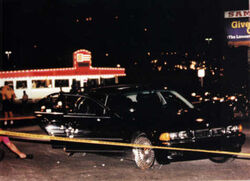
Panther Leader Tupac, Belafonte, and Black Panthers Politicize Gangs
By the time Tupac was 18 years old in 1989, the New Afrikan Panthers, a group active in at least eight cities and trying to replicate the Black Panthers, had elected Tupac as their national chairman.
Tupac only left that leadership position in 1990 to eventually produce five full CDs and hundreds of unreleased rap songs before his death in September 1996. He also acted in over six films, befriending his co-stars Janet Jackson, Mickey Rourke, Tim Roth, and Jim Belushi.
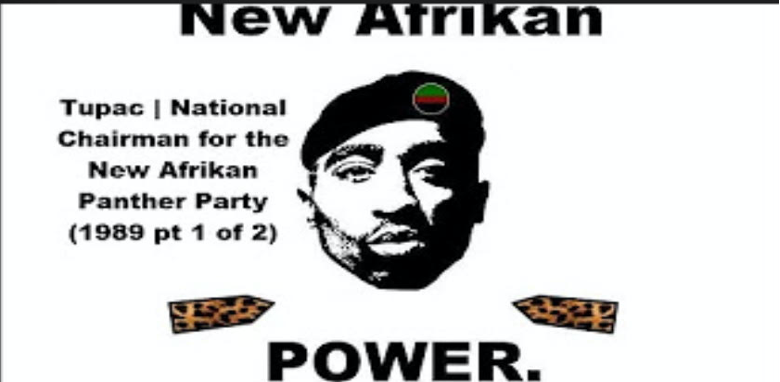
In the early 1990s, former Black Panthers and other activists successfully developed a gang truce between several sections of the Bloods and the Crips, who vowed to fight police racism instead of each other.[1] Former Panthers and civil rights activists such as singer Harry Belafonte helped the peace truce, and activist conversions spread to Oakland, which worried the intelligence community.[2]
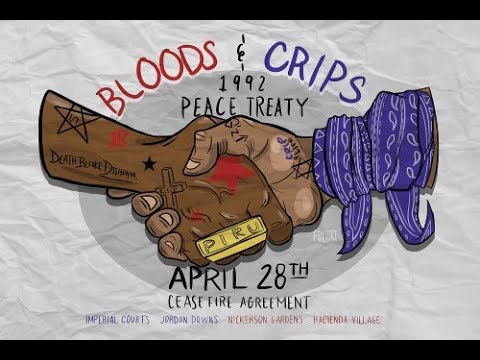
The Bloods and Crips not only encompassed the majority of the estimated 100,000 gang members in Los Angeles. News articles also acknowledged that the two gangs had spread to states across the U.S. [3] and were reportedly active in all four branches of the armed services.[4]
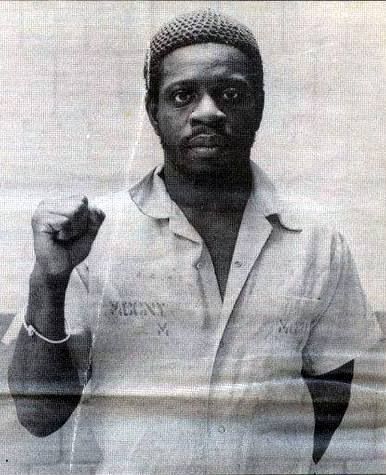
Tupac worked on this movement with his imprisoned radical stepfather Mutulu Shakur and they came up with Tupac’s Thug Life Movement as part of the gang peace truce movement. Mutulu had been a member of the Republic of New Afrika in the 1960s. Mutulu organized the gang peace truce movement in the federal prison system.[5]
Tupac’s manager and longtime political mentor, Watani Tyehimba, confirmed that Tupac had decided to pretend to be a “gangsta” in order to appeal to gangs and then politicize them,[6] as part of what he wrote out as a “Code of Thug Life.” This plan also had Tupac hosting gang leaders meeting for truce summits. Tyehimba had been a Revolutionary Action Movement-based Black Panther in Los Angeles and was the co-founding Security Director of the New Afrikan People’s Organization (NAPO).[7]
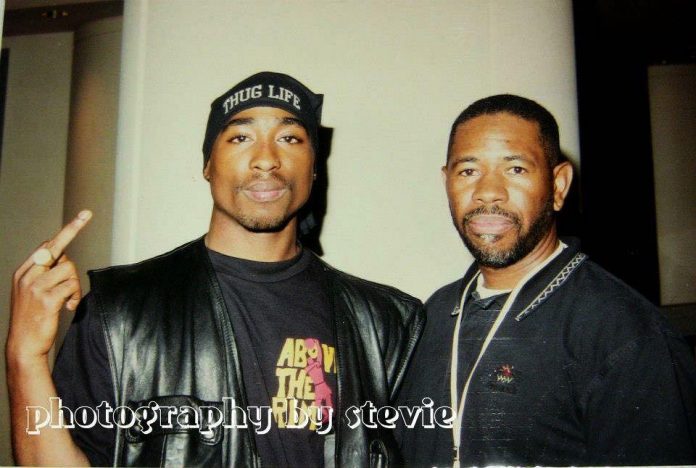
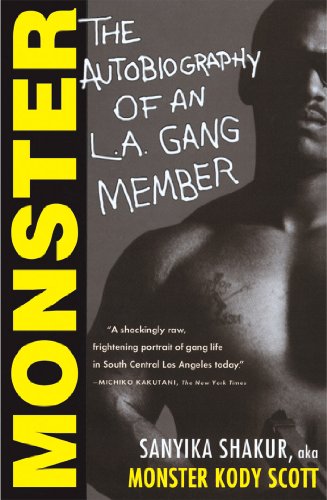
As the movement spread nationwide, it further included Latino gangs, while activists such as comedian Dick Gregory, NFL legendary running back Jim Brown, and others also got involved.[8]
In Los Angeles, gang leader-turned socialist writer “Monster” Kody Scott and Congresswoman Maxine Waters helped the movement. Scott changed his name to Sanyika Shakur in deference to Tupac and Mutulu.[9]
Gang-Activist Conversions Counter CIA Drug Trafficking, Death Row Link
Whistleblowers such as CIA agent John Stockwell have discussed CIA heroin trafficking during the Vietnam War, while Drug Enforcement Agency Director Robert Bonner detailed CIA cocaine trafficking in the 1980s and early 1990s, as reported by 60 Minutes.[10] Mutulu Shakur had founded Lincoln Detox in the Bronx in the early 1970s, with Black Panthers and the Young Lords backing him. Lincoln was the first to use acupuncture to counter drug addiction.[11]
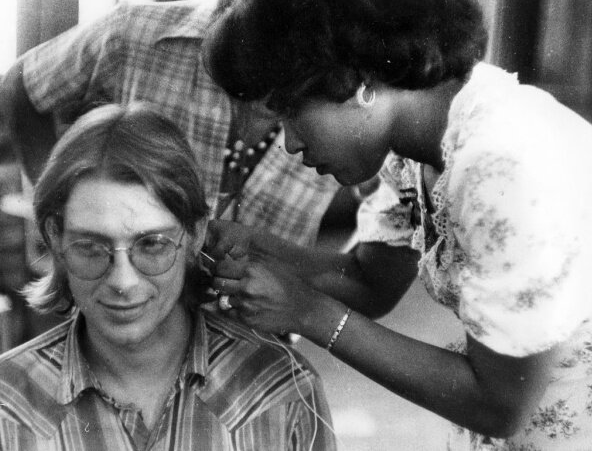
New York City first de-funded Lincoln Detox, reportedly due to its radical political education work. It then used dozens of armed police to shut its doors completely for a time, and its director received death threats, just before his bizarre death.[12]
In California, the late investigative journalist Gary Webb had researched and written extensively on the CIA’s work with the Nicaraguan Contras supplying cheap cocaine to the Los Angeles-based Freeway Ricky Ross. Ross then trafficked cocaine nationwide.[13] Webb wrote that Michael “Harry-O” Harris worked as one of Ross’s two key buyers and understudies in trafficking crack cocaine.[14]
Harris’s attorney, David Kenner, helped Harris start Death Row Records (Tupac’s last record label), while making himself owner of a parallel parent company, Godfather Productions.[15]
Harris then went to jail for the next 30 years [he was pardoned in 2021 by Donald Trump], and Kenner continued operations. Investigating Los Angeles police detective Russell Poole found much support for the reports that Death Row was trafficking drugs and guns.[16]

New York saw the conversion of thestate chapter of the Latin Kings into the Almighty Latin King and Queen Nation(ALKQN). In The Almighty Latin King and Queen Nation: Street Politics and the Transformation of a New York City Gang, published by Columbia University Press, it was reported that the 3, 000-strong group stopped drug dealing and started to get involved in activism.[17] Former Young Lords activist Vicente “Panama” Alba influenced Latin Kings leader,Antonio “King Tone” Fernandez to make this conversion.[18]
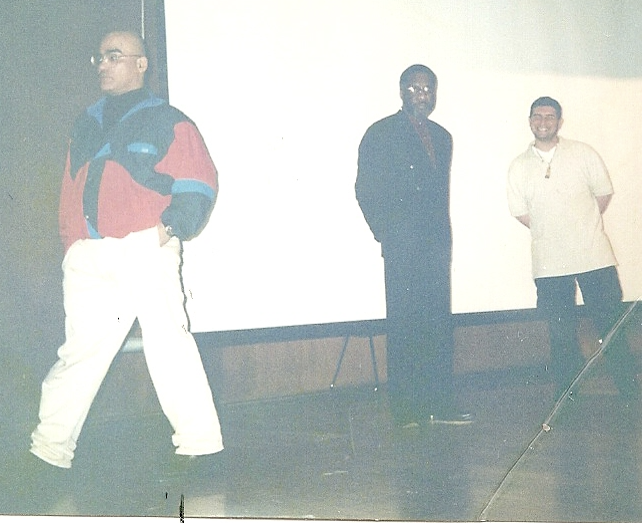
Furthermore, former top-level Wall Street insider and U.S. Deputy Housing Commissioner Catherine Austin Fitts explained how cash can increase stock values by twenty times, and this is why banks and other corporations that launder this money support the CIA drug trafficking.[19] It is also why the Latin Kings’ conversion, alone, cost the CIA traffickers millions of dollars a year and the money launderers billions of dollars a year.
Law Enforcement’s Iron Fist Response
After King Tone converted the Latin Kings into the activist Almighty Latin King and Queen Nation, the NYPD arrested King Tone on many charges, but courts failed to convict him. Prosecutors finally sent King Tone to prison long-term for “conspiracy to sell and distribute heroin” in 1998. Panama Alba and other prominent leaders have said on film they believe it was a frame-up in line with other police machinations against ALKQN.[20]
It came after the FBI and New York police spent a million dollars on Operation Crown that year. In a single raid during that operation, they used 1,000 federal, state and local police to kick down doors just before dawn but failed to find evidence against King Tone and 91 other ALKQN leaders in what was reportedly the largest raid in New York City since alcohol prohibition.[21]
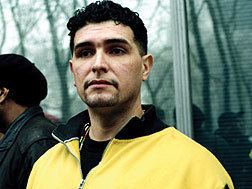
The law enforcement branch also responded fiercely in California, from the Los Angeles Police Department starting special gang units to U.S. Attorney General William Barr, saying gangs replaced Communism as the major domestic subversive threat. The FBI deployed a 100-agent unit to investigate the Bloods and the Crips. [22]
Police raided activists’ gang-truce meetings, gunmen murdered gang-truce leaders, and the government framed gang-truce leaders. For example, the government quickly freed a gunman accused of murdering gang-truce leader Tony Bogard in 1994.[23]
Police also arrested gang-truce leader Dewayne Holmes at a gang-unity dance. Trial appearances on his behalf by California Congresswoman Maxine Waters and Governor Jerry Brown could not free him.[24]
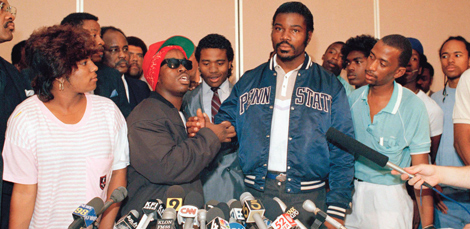
The Shakur Extended Family’s Leftist Leadership and the Murderous Targeting of Tupac
One-time Harlem Black Panther leader Afeni Shakur named Los Angeles Black Panther leader Geronimo Pratt (later Geronimo Ji Jaga), Tupac’s godfather, and Bronx Black Panther Assata Shakur, Tupac’s godmother. Afeni Shakur lived with Mutulu Shakur, Tupac’s stepfather, who was a member of the Republic of New Afrika. In 1984, Mutulu was arrested on charges of helping break Assata Shakur from jail in the 1970s and “conspiring” to rob a Brinks armored truck in 1981.[25]
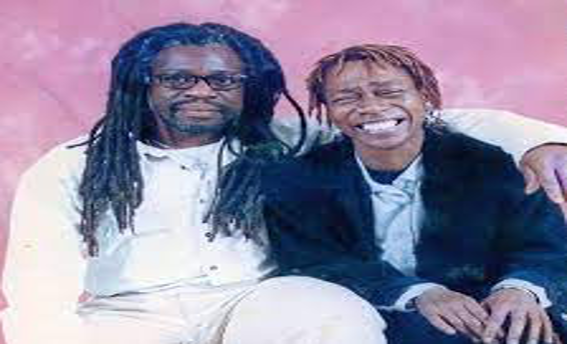
Afeni had worked with Watani Tyehimba on trying to free Geronimo Pratt and Watani introduced Tupac to New Afrikan People’s Organization national chairman Chokwe Lumumba. Tupac made Lumumba his national lawyer.[26]
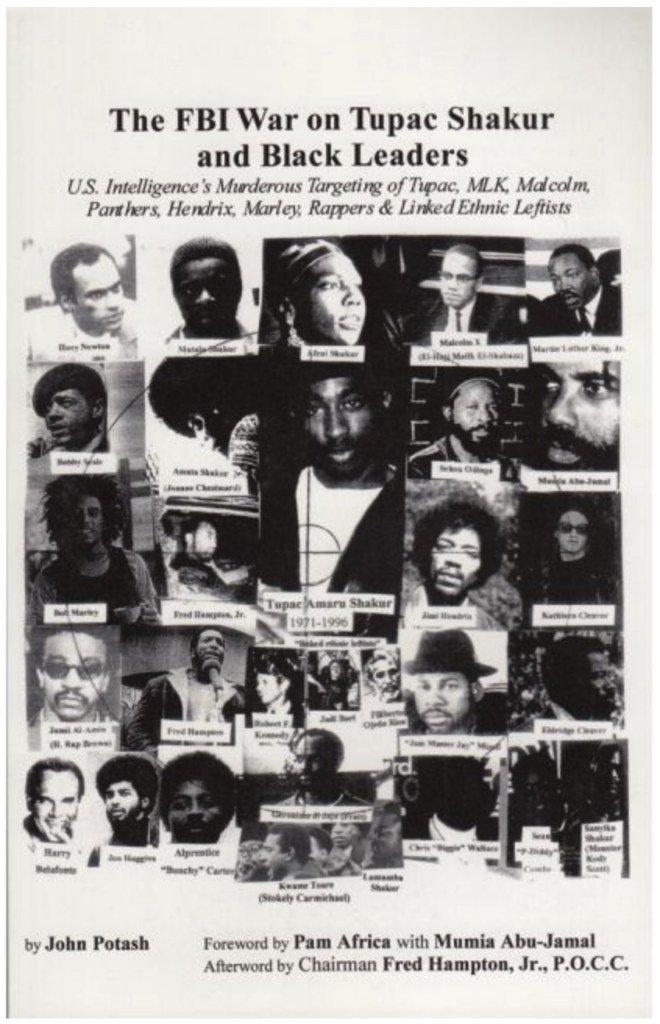
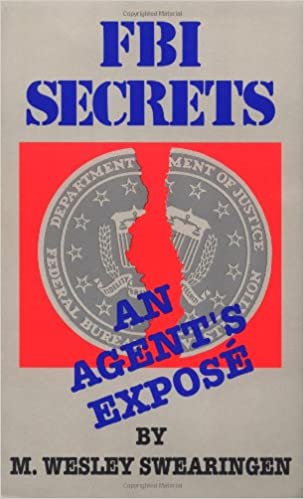
Evidence supports at least four U.S. Intelligence attempts to murder Tupac before their successful fifth attempt. The FBI’s Counterintelligence Program (Cointelpro) had targeted Tupac’s Black Panther family before it officially ended in 1971.
FBI Cointelpro agent Wes Swearingen said in a memoir that Cointelpro actually continued into the 1990s under different names.[27]
As a 2017 biopic on Tupac stated, evidence supports a Justice Department admission of more than 4,000 pages in Tupac’s FBI file.[28]
Regarding Tupac, in 1991, just days after his first MTV video release, Oakland police stopped Tupac for jaywalking, choked him unconscious, and repeatedly banged his head against the curb. Both police actions had previously led to victims’ deaths. In 1992, police also passively watched as strangers punched and then shot at Tupac for no reason in Marin City, California.[29]
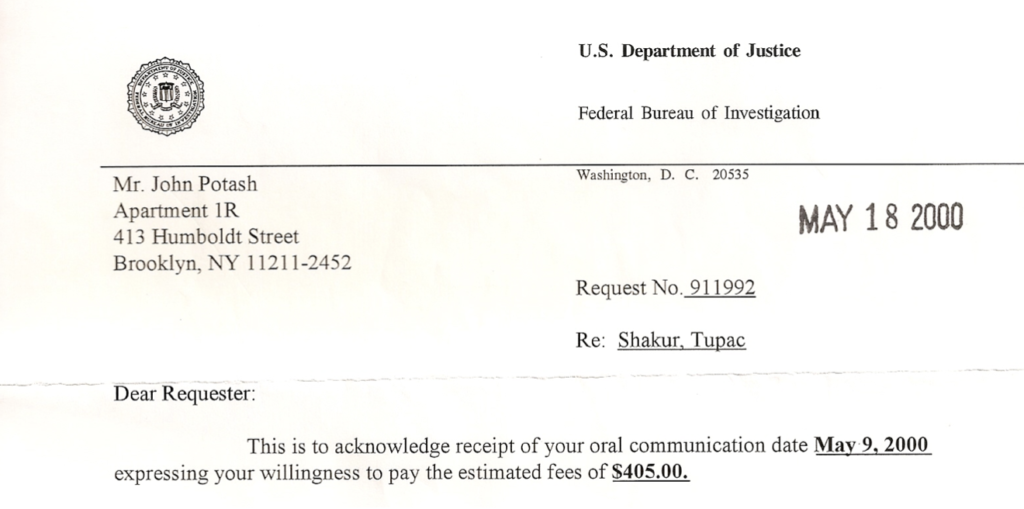
In 1993, witnesses described how two purportedly off-duty police officers ran over to Tupac’s car, smashed his car window and shot at him using a gun stolen from an evidence locker. In 1994, a doctor’s affidavit confirmed how alleged muggers shot Tupac twice in the skull as he lay on the lobby floor of a Times Square recording studio. Tupac miraculously survived, but police refused to review lobby surveillance video of the incident and simply closed the investigation.[30]

And finally, by September 1996, Tupac had completed his short three-CD recording contract with Death Row Records. Los Angeles Police Detective Russell Poole reported finding dozens of his fellow police officers at all levels of Death Row Records. In his book LAbyrinth, veteran reporter Randall Sullivan quoted Poole as saying his supervisors told him these Death Row cops could be considered “troubleshooters or covert agents.”[31] Filmmaker Nick Broomfield said Poole stated that he believed his fellow cops were involved in Tupac’s murder.[32]
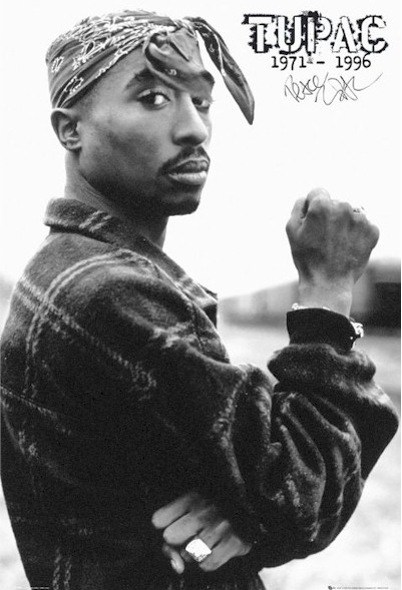
Kevin Hackie, who was one of Tupac’s top bodyguards, said he was on the FBI’s payroll while working for Death Row.[33] Hackie actually defied the FBI in telling Tupac not to go to Las Vegas the night of his murder. Death Row then fired Hackie, before the FBI then framed and jailed him. Hackie reported to Detective Poole that Santa Monica police had confiscated a gun that they gave to him. The FBI then told him to give that gun to police working for Death Row, and that was the gun that killed Tupac.[34]
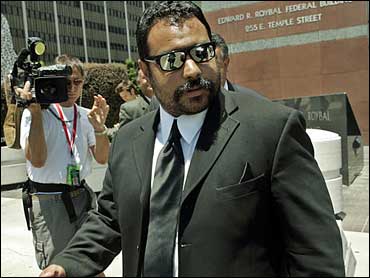
Tupac’s murder temporarily ended the gang truce as Death Row spread the word that the Crips gang killed Tupac, before activists quelled the week-long reignited gang war.[35]
Continued Attacks and Coverup around the Shakurs?
In one of the few definitive media investigations of Tupac’s murder, A&E’s Who Killed Tupac? documentary series (2017), attorney Benjamin Crump and others provided some answers. For one, they showed the ridiculous weakness of Los Angeles police disinformation agent Greg Kading’s evidence that Sean “P Diddy” Combs paid Crips gang members to kill Tupac. Secondly, they stated that 28 people associated with Tupac and the investigation suffered early deaths since his murder.
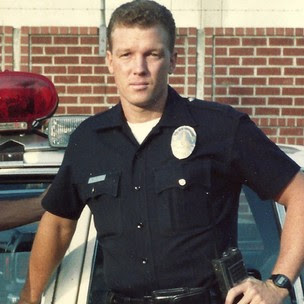
One of the first two examples came when Watani Tyehimba’s son, Yakhisizwe Tyehimba, who acted as a Tupac bodyguard, died mysteriously soon after Tupac.[36]
Then, Tupac’s backup singer, Yafeu “Kadafi” Fula, the son of Bronx Black Panther Sekou Odinga and Panther Yaasmyn Fula, was shot in the head a few months after Tupac was shot.[37] Fula was the top forthcoming witness to Tupac’s murder but police never detained him for a statement.[38]
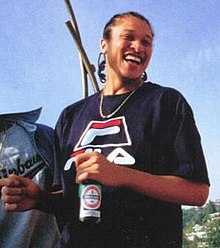
In 2015, Afeni Shakur separated from her husband, and then filed for divorce in 2016. She died suddenly in 2016, at the age of 69, while in the middle of a court battle over Tupac’s $50 million estate. Afeni’s body was bizarrely given to that estranged husband instead of her adult daughter Sekyiwa Shakur.[39] Authorities also denied Mutulu Shakur parole in 2016, as well as compassionate parole in 2020 when he was diagnosed with cancer. [40]
While such attacks continue on Tupac’s Shakur family, his legacy as a rap icon, film star, and particularly his important activism deserves more widespread attention.

-
Jesse Katz, “Crips and Bloods Factions Prepare Ground for Widespread Gang Truce Cease-fire,” Los Angeles Times, May 19, 1994, p. 1. http://articles.latimes.com/1994-05-19/local/me-59703_1_city-s-black-gangs-crips-and-bloods-factions-widespread-gang-truce ↑
-
Joe Garofoli, “Singer Belafonte feels the beat of antiwar sentiment/Keynote speaker at Oakland rally hears international criticism,” San Francisco Chronicle, April 5, 2003, p. A15. ↑
-
Mitchell Landsberg and John Mutchell, “In Gang’s Territory, a Weary Hope,” Los Angeles Times, December 5, 2002, p. A1. ↑
-
Reuters, “Gangs Found in Military, Magazine Says,” St. Louis Post-Dispatch, July 17, 1995, p. A4. ↑
-
Bruck, “The Takedown of Tupac,” The New Yorker, July 7, 1997, p. 53. He reportedly started organizing the truce in the Lompoc federal prison, http://www.hitemup.com/tupac/family.html ↑
-
Tupac’s national lawyer, Chokwe Lumumba May 6, 2000. See John Potash, Drugs as Weapons Against Us (Walterville, Oregon: Trine Day, 2015), p. 337. Also see John Potash, The FBI War on Tupac Shakur and Black Leaders (Baltimore, MD: Progressive Left Press, 2007). ↑
-
See “Code of Thug Life” reprinted in Jamal Joseph, Tupac Shakur: Legacy (New York: Atria, 2006), pp. 37-38. See also Bruck, New Yorker, http://www.hitemup.com/tupac/family.html . [NOTE: Why space below?] ↑
-
Plain Dealer Staff, “‘Stop the Killing’ Gang Summit: How it began and who was involved (with photo gallery),” The Cleveland Plain Dealer, March 24, 2013. ↑
-
Mike Davis, “Who Killed LA: Part Two: The Verdict is Given,” New Left Review 198, pp. 34-35; Kody Scott (aka Sanyika Shakur), Monster: The Autobiography of an L.A. Gang Member (New York: Penguin, 1994), pp. vii-viii, 347-49. ↑
-
Stockwell at 4:00 https://www.youtube.com/watch?v=Pf98TYr0MUc ↑
-
Mia Donovan, Dope Is Death (2020) https://www.imdb.com/title/tt11828284/ Lee Lew Lee, All Power to the People (1996) https://www.imdb.com/title/tt0210482/ ↑
-
Dr. Mutulu Shakur, A Life of Struggle, October 16, 1992, Chicago Full Interview; Ellinor R. Mitchell, “The Lincoln Story,” National Acupuncture Detoxification Association. ↑
-
Gary Webb and Rick Ross, as well as DEA agent whistleblower Michael Levine, on The Montel Williams Show, [NOTE: Is something missing here? If not, change comma to period.} ↑
-
Gary Webb, Dark Alliance: The CIA, the Contras, and the Crack Cocaine Explosion (New York: Seven Stories Press, 1998). ↑
-
Ronin Ro, Have Gun Will Travel: The Spectacular Rise and Violent Fall of Death Row Records (New York: Doubleday, 1998), pp. 76-80. ↑
-
Police Detective Russell Poole said this on film in Nick Broomfield, Biggie and Tupac (2002). Poole names many of the cops working in Death Row throughout this book. Randall Sullivan, LAbyrinth, (New York: Grove/Atlantic, 2018) pp. 40, 124, 166, 169-70, 191. Also, www.pbs.org/wgbh/pages/frontline/shows/lapd/interviews/poole.html ↑
-
David Brotherton and Luis Barrios, The Almighty Latin King and Queen Nation: Street Politics and the Transformation of a New York City Gang (New York: Columbia University Press, 2004). On membership, p. 199. Further see video, Black and Gold: The Latin King and Queen Nation, a documentary (Big Noise Films, 1999). ↑
-
“Seize the Hospital to Serve the People: An Interview with Activist Cleo Silvers, 2009,” www.socialmedicine.org/media/. Personal interviews with Vicente “Panama” Alba October 25, 1996 and May 1, 1998; also, personal interview with Antonio “King Tone” Fernandez and Hector Torres, April 25, 1997. [NOTE: Why space below?] ↑
-
Catherine Austin Fitts, “Narco Dollars for Beginners; How the Money Works in the Illicit Drug Trade; Part II: The Narco Money Map,” Narco News Bulletin, October 31, 2001; also, Michael Smith, “Banks Financing Mexico Drug Gangs Admitted in Wells Fargo Deal,” Bloomberg News, September 29, 2010. http://www.narconews.com/narcodollars2.html ↑
-
Big Noise Tactical Media and PM Press, Black and Gold: The Story of the Almighty Latin King and Queen Nation (2008). ↑
-
“Operation Crown: The Political Persecution of the Latin Kings,” Revolutionary Worker #959, May 31, 1998. ↑
-
Mike Davis, “Who Killed LA? A Political Autopsy,” New Left Review 197, 1993, p. 7; Megan Garvey and Rich Winton, “City Declares War on Gangs,” Los Angeles Times, December 4, 2002. ↑
-
Jesse Katz, “Man Freed in Death of Gang Leader, Courts: Rodney Compton is to get one year probation in the slaying of Tony Bogard, who helped reach a truce between the Crips and Bloods,” Los Angeles Times, June 1, 1994, p. 3; activist witness broadcast on 99.1, WBAI radio in New York City, April 29, 2001. ↑
-
Mike Davis, “Who Killed Los Angeles? Part Two,” New Left Review 198, 1993, p. 35. ↑
-
Connie Bruck, “The Takedown of Tupac,” The New Yorker, July 7, 1997, p. 47. On Assata Shakur, see editorial, “Thoughts and Notes on Tupac,” The Amsterdam News (New York), December 17, 1994, p. 24. ↑
-
Personal interview, Watani Tyehimba, May 2, 2000; personal interview with Chokwe Lumumba, May 10, 2000; Michael Eric Dyson, Holler If You Hear Me, p. 84. ↑
-
M. Wesley Swearingen, FBI Secrets: An Agent’s Exposé (Boston, MA: South End Press, 1994); Jon Roland, FBI Secrets: An Agent’s Expose (a review of the Swearingen book). https://constitution.org/2-Authors/jroland/col/mwswear.htm ↑
-
This writer filed a Freedom of Information Act (FOIA) request in 1999. A Justice Department worker inadvertently admitted over 4,000 pages in Tupac’s FBI file, explaining it’s 10 cents a page so over $400 would be needed. See letter requesting that from this writer. Also, Benny Boom, All Eyez On Me (2017) https://www.imdb.com/title/tt1666185/ ↑
-
“Claim Against the City of Oakland, California, Claimant: Tupac Shakur” by John Burris, Esq., photocopied for Jacob Hoye and Karolyn Ali, eds., Tupac: Resurrection (New York: Atria Books, 2003), pp. 78-79; Danyel Smith “Introduction,” Vibe editors, Tupac Shakur (New York: Crown Publishing, 1997), p. 17; Robert McFadden, “At Two Rallies, Protesters Accuse Police in Killings,” New York Times, August 3, 2003, p. 32; Barry Paddock, Rocco Parascandola and Corky Siemaszko, “Homicide: Medical Examiner Says NYPD Chokehold Killed Staten Island Dad Eric Garner,” New York Daily News, August 21, 2014; Marku Reynolds, Thug Immortal (Documentary, Xenon Entertainment, 1997) starting at 51:30 minutes; Veronica Chambers, “Ain’t Nothing Changed but the Weather,” Premiere, August 1993. ↑
-
Personal interviews with Tupac’s Atlanta trial lawyer, Ken Ellis, May 12, 2000; eyewitness Watani Tyehimba, November 5, 2003, and eyewitness Billy Lesane, April 10, 1999; and Tupac’s national lawyer, Chokwe Lumumba May 6, 2000. Personal interview with Tupac’s Atlanta trial lawyer, Ken Ellis, May 12, 2000. Also see Danzy Senna, “Violence is Golden,” Spin Magazine, April 1994, pp. 43-47, and, Scruggs and Marshall, “Witness says off-duty cops fired first shot,” Atlanta Journal Constitution, p. D12, November 3, 1993. On bullets through head while on ground, see Deposition of Barbara Justice, MD, New York v. Tupac Shakur, December 21, 1994. ↑
-
Police Detective Russell Poole in Broomfield, Biggie and Tupac, and in Sullivan, LAbyrinth, pp. 40, 124, 166, 169-70, 191. Also, www.pbs.org/wgbh/pages/frontline/shows/lapd/interviews/poole.html ↑
-
Originally in Nick Broomfied, Biggie and Tupac (2002), excerpted for John Potash, Drugs as Weapons Against Us: The CIA War on Musicians and Activists (2019) trailer (long form). ↑
-
Billboard staff, “FBI Informant Testifies in B.I.G. Case,” Billboard, June 23, 2005. ↑
-
Former Detective Russell Poole and Michael Douglas Carlin, “The Facts Behind the Murder of Tupac Shakur,” Century City News, March 12, 2019. ↑
-
Nick Broomfield quoting police officer and FBI informant Kevin Hackie in documentary, Biggie and Tupac, starting at 1:08:44. Sullivan, LAbyrinth, pp. 141-43, 145 ↑
-
Tupac’s national lawyer, Chokwe Lumumba May 6, 2000. Printed in John Potash, Drugs as Weapons Against Us (Walterville, Oregon: Trine Day, 2015), p. 337. Also printed in John Potash, The FBI War on Tupac Shakur and Black Leaders (Baltimore, MD: Progressive Left Press, 2007). ↑
-
Cathy Scott, “Shakur Shooting Witness Found Dead in New Jersey,” The Las Vegas Sun, November 13, 1996. ↑
-
On Las Vegas police ignoring Fula, see Cathy Scott, The Killing of Tupac Shakur (Las Vegas, Nevada, Huntington Press, 2nd ed. 2002), pp. 111-12. ↑
-
Nancy Dillon, et al, “Gust Davis, estranged husband of Tupac Shakur’s mother, claims her body to be cremated,” New York Daily News, May 9, 2016. ↑
-
My Religion Is Rap Admin, “Tupac’s Stepfather Mutulu Shakur Denied Early Release from Federal Prison Even Though He’s Dying From Cancer,” My Religion Is Rap, November 6, 2020. ↑
CovertAction Magazine is made possible by subscriptions, orders and donations from readers like you.
Blow the Whistle on U.S. Imperialism
Click the whistle and donate
When you donate to CovertAction Magazine, you are supporting investigative journalism. Your contributions go directly to supporting the development, production, editing, and dissemination of the Magazine.
CovertAction Magazine does not receive corporate or government sponsorship. Yet, we hold a steadfast commitment to providing compensation for writers, editorial and technical support. Your support helps facilitate this compensation as well as increase the caliber of this work.
Please make a donation by clicking on the donate logo above and enter the amount and your credit or debit card information.
CovertAction Institute, Inc. (CAI) is a 501(c)(3) non-profit organization and your gift is tax-deductible for federal income purposes. CAI’s tax-exempt ID number is 87-2461683.
We sincerely thank you for your support.
Disclaimer: The contents of this article are the sole responsibility of the author(s). CovertAction Institute, Inc. (CAI), including its Board of Directors (BD), Editorial Board (EB), Advisory Board (AB), staff, volunteers and its projects (including CovertAction Magazine) are not responsible for any inaccurate or incorrect statement in this article. This article also does not necessarily represent the views the BD, the EB, the AB, staff, volunteers, or any members of its projects.
Differing viewpoints: CAM publishes articles with differing viewpoints in an effort to nurture vibrant debate and thoughtful critical analysis. Feel free to comment on the articles in the comment section and/or send your letters to the Editors, which we will publish in the Letters column.
Copyrighted Material: This web site may contain copyrighted material the use of which has not always been specifically authorized by the copyright owner. As a not-for-profit charitable organization incorporated in the State of New York, we are making such material available in an effort to advance the understanding of humanity’s problems and hopefully to help find solutions for those problems. We believe this constitutes a ‘fair use’ of any such copyrighted material as provided for in section 107 of the US Copyright Law. You can read more about ‘fair use’ and US Copyright Law at the Legal Information Institute of Cornell Law School.
Republishing: CovertAction Magazine (CAM) grants permission to cross-post CAM articles on not-for-profit community internet sites as long as the source is acknowledged together with a hyperlink to the original CovertAction Magazine article. Also, kindly let us know at info@CovertActionMagazine.com. For publication of CAM articles in print or other forms including commercial internet sites, contact: info@CovertActionMagazine.com.
By using this site, you agree to these terms above.
About the Author
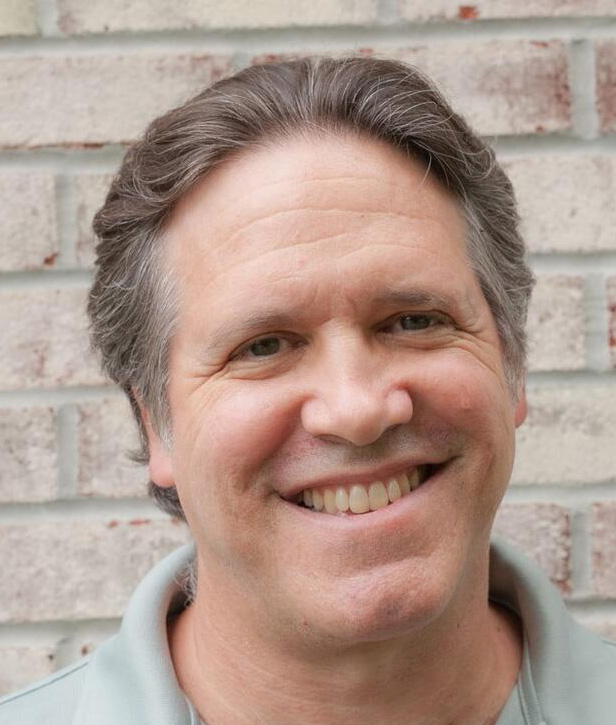
John Potash is the author of the books and films: The FBI War on Tupac Shakur (2nd ed), Drugs as Weapons Against Us: The CIA War on Musicians and Activists, and Shots: Eugenics to Pandemics (2022). His latest film is CIA Drugs R Us! A Drugs as Weapons… Sequel (2024) which reviews CHAOS in light of other CIA operations. John’s work can be found at johnpotash.com and he can be reached at: jlpotash@gmail.com.

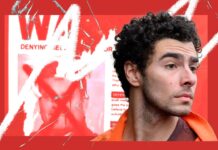
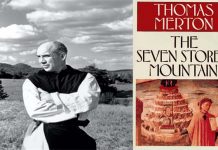
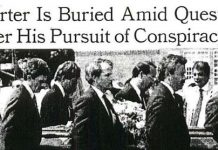
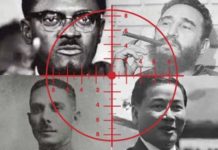
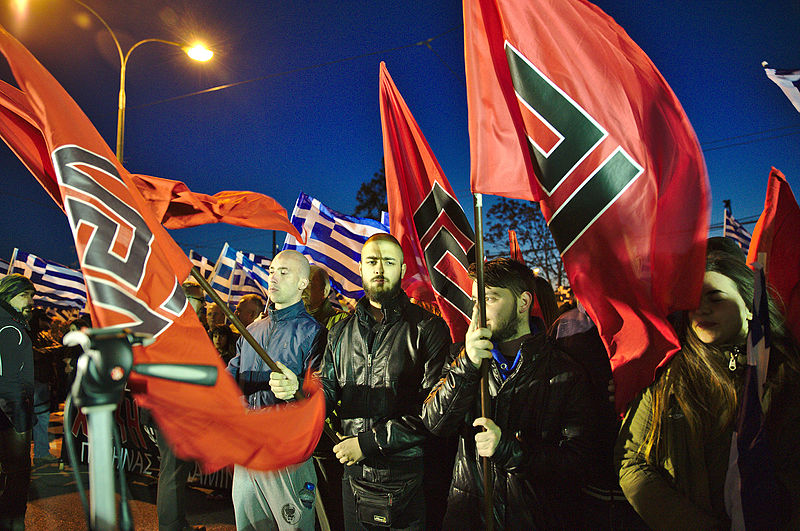

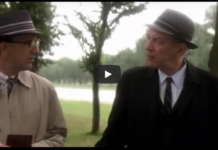


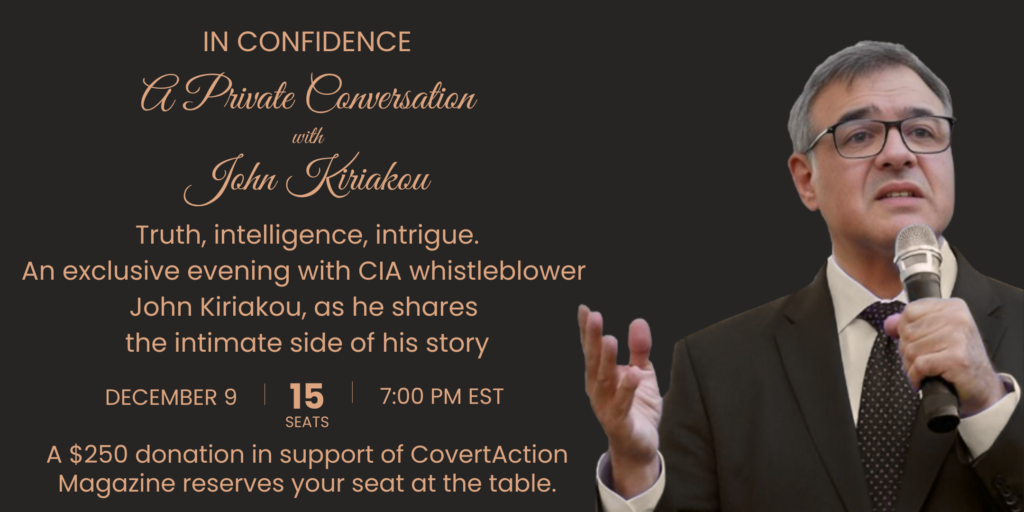
Wasn’t Shakur a convicted sex offender committed to misogyny, crime and praise of capitalism ?
[…] 22) Tupac Shakur Would Have Turned 50 Today–If He Hadn’t Threatened Deal Between Drug Traffickers and U.S. Banks Making Billions Laundering CIA Drug Money https://covertactionmagazine.com/2021/06/16/tupac-shakur-would-have-turned-50-today-if-he-hadnt-thre… […]
https://www.bitchute.com/video/7aNrl2zkT42O/
[…] Writer claims Tupac Shakur survived several assassination attempts before being killed by the government, to stop his activity converting gangs into community organizations. “Kevin Hackie, who was one of Tupac’s top bodyguards, said he was on the FBI’s payroll while working for Death Row. Hackie actually defied the FBI in telling Tupac not to go to Las Vegas the night of his murder. Death Row then fired Hackie, before the FBI then framed and jailed him. Hackie reported to Detective Poole that Santa Monica police had confiscated a gun that they gave to him. The FBI then told him to give that gun to police working for Death Row, and that was the gun that killed Tupac. Tupac’s murder temporarily ended the (Crips and Bloods) gang truce as Death Row spread the word that the Crips gang killed Tupac, before activists quelled the week-long reignited gang war.” https://covertactionmagazine.com/2021/06/16/tupac-shakur-would-have-turned-50-today-if-he-hadnt-thre… […]
[…] sections of the Bloods and the Crips, who vowed to fight police racism instead of each other.[1] Former Panthers and civil rights activists such as singer Harry Belafonte helped the peace truce, […]
[…] Tupac Shakur Would Have Turned 50 Today–If He Hadn’t Threatened Deal Between Drug Traffickers an… […]
[…] Tupac Shakur Would Have Turned 50 Today–If He Hadn’t Threatened Deal Between Drug Traffickers and U.S. Banks Making Billions Laundering CIA Drug Money https://covertactionmagazine.com/2021/06/16/tupac-shakur-would-have-turned-50-today-if-he-hadnt-thre… […]
[…] By John Potash Via CovertAction Magazine […]
[…] Global Research, June 16, 2021CovertAction Magazine […]